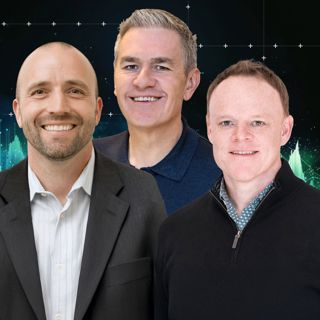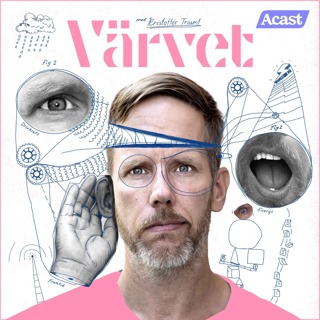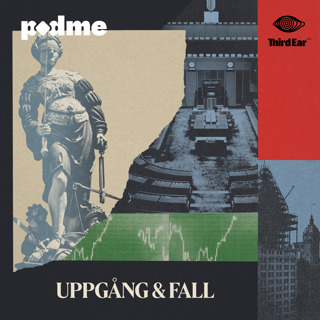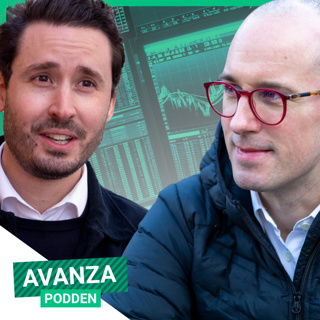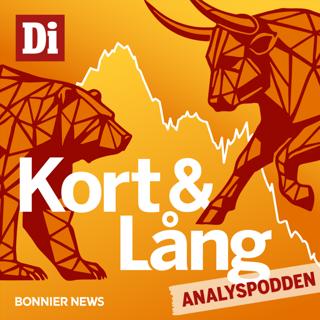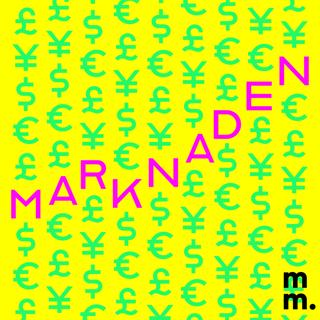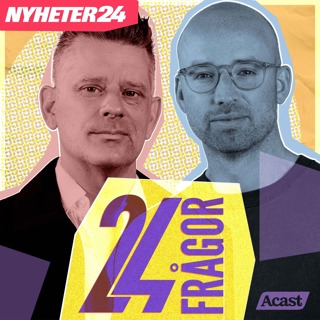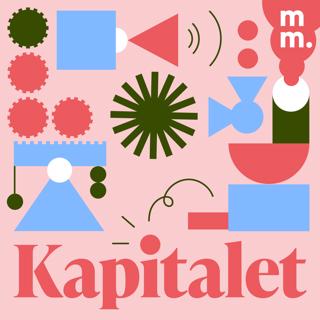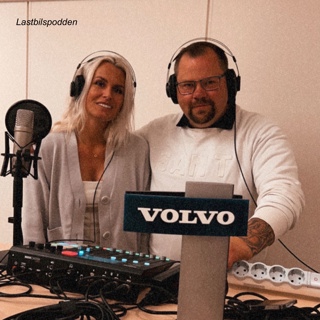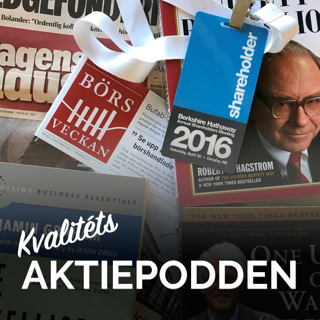
From Promise to Reality: Inside a16z's Data and AI Forum
Nvidia’s CEO Jensen Huang declared in a recent keynote, “we are in the iPhone moment of AI.”This special episode will give you an inside look into a16z’s Data and AI Forum, hosted the day GPT-4 came out, featuring many of the most influential builders in the space – from the companies building foundational models like OpenAI to those building the underlying infrastructure like AWS. Resources:Check out CoactiveAI: https://coactive.ai/Check out CharacterAI: http://character.ai/Check out Hex: https://hex.tech/Follow Cody on Twitter: https://twitter.com/codyaustunFollow Myle on Twitter: https://twitter.com/myleottFollow Barry on Twitter: https://twitter.com/barrald Stay Updated: Find a16z on Twitter: https://twitter.com/a16zFind a16z on LinkedIn: https://www.linkedin.com/company/a16zSubscribe on your favorite podcast app: https://a16z.simplecast.com/Follow our host: https://twitter.com/stephsmithioPlease note that the content here is for informational purposes only; should NOT be taken as legal, business, tax, or investment advice or be used to evaluate any investment or security; and is not directed at any investors or potential investors in any a16z fund. For more details please see a16z.com/disclosures. Stay Updated:Find a16z on XFind a16z on LinkedInListen to the a16z Podcast on SpotifyListen to the a16z Podcast on Apple PodcastsFollow our host: https://twitter.com/eriktorenberg Please note that the content here is for informational purposes only; should NOT be taken as legal, business, tax, or investment advice or be used to evaluate any investment or security; and is not directed at any investors or potential investors in any a16z fund. a16z and its affiliates may maintain investments in the companies discussed. For more details please see a16z.com/disclosures. Hosted by Simplecast, an AdsWizz company. See pcm.adswizz.com for information about our collection and use of personal data for advertising.
2 Maj 202327min
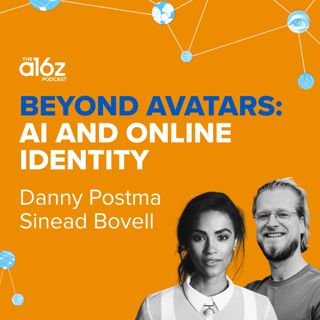
Beyond Avatars: How AI is Reshaping Online Identity
In a recent episode, we delved into the first wave of technology that was used to create digital influencers like 'Lil Miquela back in 2016.Fast forward to today, we're presented with a whole new set of tools that enable almost anyone to build their own digital influencer. In this episode, Sinead Bovell and Danny Postma discuss the transformative impact of artificial intelligence on the world of modeling, online creation, and self-representation.From the rise of AI-generated photos to the democratization of creativity, they discuss the potential of AI in shaping the future of digital expression.Topics Covered:00:00 - Introduction03:08 - The key insight08:00 - The photo studio of the future09:44 - Programs and models behind deep fakes10:58 - How the technology is used today12:36 - How real is today’s content?15:29 - The cost of a virtual model17:13 - Industry benefits19:28 - Market appetite23:25 - Evolving tech25:15 - Unlocking a new wave of creativity28:38 - Future predictions30:23 - Keeping up with tech32:02 - Finding a moat34:09 - Stacked AI models35:25 - Running your own GPUs and models37:33 - Product ideasResources:Find Danny Postma on Twitter: https://twitter.com/dannypostmaaHeadshot Pro, ProfilePicture.Ai plus all of Danny’s projects at: https://www.postcrafts.com/Find Sinéad Bovell on Instagram: https://www.instagram.com/sineadbovell/?hl=en Stay Updated: Find a16z on Twitter: https://twitter.com/a16zFind a16z on LinkedIn: https://www.linkedin.com/company/a16zSubscribe on your favorite podcast app: https://a16z.simplecast.com/Follow our host: https://twitter.com/stephsmithioPlease note that the content here is for informational purposes only; should NOT be taken as legal, business, tax, or investment advice or be used to evaluate any investment or security; and is not directed at any investors or potential investors in any a16z fund. For more details please see a16z.com/disclosures. Stay Updated:Find a16z on XFind a16z on LinkedInListen to the a16z Podcast on SpotifyListen to the a16z Podcast on Apple PodcastsFollow our host: https://twitter.com/eriktorenberg Please note that the content here is for informational purposes only; should NOT be taken as legal, business, tax, or investment advice or be used to evaluate any investment or security; and is not directed at any investors or potential investors in any a16z fund. a16z and its affiliates may maintain investments in the companies discussed. For more details please see a16z.com/disclosures. Hosted by Simplecast, an AdsWizz company. See pcm.adswizz.com for information about our collection and use of personal data for advertising.
24 Apr 202339min

Insights from the Frontlines of Consumer Tech
There is arguably nothing that impacts our daily lives more than consumer technology. This technology can drive our ability to change careers, build an audience, or feel understood. And in this episode, listeners get a sneak peek into our new consumer series, Field Notes, where a16z’s very own Connie Chan speaks with the builders, creators, and investors behind the technology that shapes our daily lives.If you like these segments, you can find the full episodes at a16z.com/fieldnotes.Topics Covered:00:00 - Introduction02:13 - Chris Schroder08:15 - Brian Wong15:35 - Tracy Sun23:03 - Deb Liu30:56 - Susan PlagemannResources: Find the full series: https://a16z.com/fieldnotesFind Connie on Twitter: https://twitter.com/conniechanDeb's Part 1: https://www.youtube.com/watch?v=Is2pm06MNt8Deb's Part 2: https://www.youtube.com/watch?v=osJp6S66u2UChris's episode: https://www.youtube.com/watch?v=Zux1wVirUjs Stay Updated: Find a16z on Twitter: https://twitter.com/a16zFind a16z on LinkedIn: https://www.linkedin.com/company/a16zSubscribe on your favorite podcast app: https://a16z.simplecast.com/Follow our host: https://twitter.com/stephsmithioPlease note that the content here is for informational purposes only; should NOT be taken as legal, business, tax, or investment advice or be used to evaluate any investment or security; and is not directed at any investors or potential investors in any a16z fund. For more details please see a16z.com/disclosures. Stay Updated:Find a16z on XFind a16z on LinkedInListen to the a16z Podcast on SpotifyListen to the a16z Podcast on Apple PodcastsFollow our host: https://twitter.com/eriktorenberg Please note that the content here is for informational purposes only; should NOT be taken as legal, business, tax, or investment advice or be used to evaluate any investment or security; and is not directed at any investors or potential investors in any a16z fund. a16z and its affiliates may maintain investments in the companies discussed. For more details please see a16z.com/disclosures. Hosted by Simplecast, an AdsWizz company. See pcm.adswizz.com for information about our collection and use of personal data for advertising.
19 Apr 202335min

Marketing web3: Audience, Community, More
with @amandacassatt @kimbatronic @smc90All about marketing, and web3 -- not just for marketers already in or seeking to enter web3, but also anyone doing community marketing/ community management, devrel (developer relations); or simply doing marketing in web2 or classic growth marketing, seeking to understand the latest trends and tactics.With the author of the new book, Web3 Marketing: A Handbook for the Next Internet Revolution, Amanda Cassatt (who was also the first CMO at ConsenSys, helping bring Ethereum to market; and also founded and leads the pioneering, native web3-marketing agency Serotonin). Also joining this episode to share insights on marketing web3 -- in conversation with host and editor in chief Sonal Chokshi -- is Kim Milosevich, CMO at a16z crypto, where she oversees brand, marketing, events, and communications (and before that was VP of communications at Coinbase, where she took the company through its direct listing while leading internal, policy, product, and corporate communications internationally). The episode also covers key top of mind questions for web3 builders and others, including how to do community marketing, manage "profiles" in decentralized and open source, and finding your audience... including feedback for product-market fit. And much. much more! Stay Updated:Find a16z on XFind a16z on LinkedInListen to the a16z Podcast on SpotifyListen to the a16z Podcast on Apple PodcastsFollow our host: https://twitter.com/eriktorenberg Please note that the content here is for informational purposes only; should NOT be taken as legal, business, tax, or investment advice or be used to evaluate any investment or security; and is not directed at any investors or potential investors in any a16z fund. a16z and its affiliates may maintain investments in the companies discussed. For more details please see a16z.com/disclosures. Hosted by Simplecast, an AdsWizz company. See pcm.adswizz.com for information about our collection and use of personal data for advertising.
13 Apr 20231h 16min
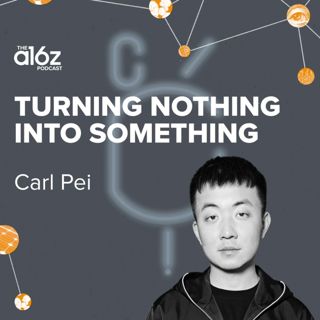
Building Hardware and Taking on the Phone Giants
People often say that building a hardware company is like “playing on hard mode”. Building a hardware company during a global pandemic, with the unpredictability of supply chains and markets, is harder than hard. Trying to penetrate the phone market in particular – where only a few players own almost all the market share – is REALLY hard.In today’s episode we chat with Carl Pei, founder of Nothing. Between Nothing and previously co-founding OnePlus, Carl has twice managed to do what many others have failed to do. Nothing has sold over 1m units and built a team of over 400. In this episode, Carl chats with us about why he’s at it again, what it takes to successfully build hardware, and how he thinks about making technology fun again.Timestamps:02:11 - The hardware market02:53 - Breaking into the phone market05:19 - Securing factories and stakeholders07:39 - Differentiating products10:32 - Hardware design11:53 - Strengthening software proposition16:04 - Table stakes17:49 - Marketing and Youtube19:34 - Underestimating the value chain21:50 - Manufacturing23:27 - Supply chain26:05 - Remote work27:36 - The future of hardware30:45 - Breakthrough hardware32:35 - Making tech fun againResources:Nothing website: https://us.nothing.tech/Nothing’s Youtube channel: https://www.youtube.com/@NothingTechnologyFind Carl on Twitter: https://twitter.com/getpeidFind Nothing on Twitter: https://twitter.com/nothingNothing’s recently launched Ear (2): https://us.nothing.tech/products/ear-2Stay Updated: Find a16z on Twitter: https://twitter.com/a16zFind a16z on LinkedIn: https://www.linkedin.com/company/a16zSubscribe on your favorite podcast app: https://a16z.simplecast.com/Follow our host: https://twitter.com/stephsmithioPlease note that the content here is for informational purposes only; should NOT be taken as legal, business, tax, or investment advice or be used to evaluate any investment or security; and is not directed at any investors or potential investors in any a16z fund. For more details please see a16z.com/disclosures. Stay Updated:Find a16z on XFind a16z on LinkedInListen to the a16z Podcast on SpotifyListen to the a16z Podcast on Apple PodcastsFollow our host: https://twitter.com/eriktorenberg Please note that the content here is for informational purposes only; should NOT be taken as legal, business, tax, or investment advice or be used to evaluate any investment or security; and is not directed at any investors or potential investors in any a16z fund. a16z and its affiliates may maintain investments in the companies discussed. For more details please see a16z.com/disclosures. Hosted by Simplecast, an AdsWizz company. See pcm.adswizz.com for information about our collection and use of personal data for advertising.
6 Apr 202337min
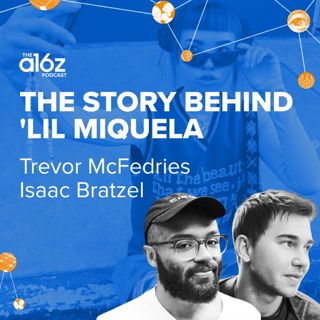
Digital Humans and the Story Behind Lil Miquela
You’ve probably heard of ‘Lil Miquela. The 19 year-old Brazilian-American influencer has millions of followers and has partnered with the likes of Samsung and Prada. But despite capturing the hearts of many, she’s not real. But you probably haven’t heard her origin story. In this episode we take a trip back to 2016, to a world that looked much different to today, together with two of Miquela’s creators – Trevor McFedries and Isaac Bratzel – cofounder and Chief Design and Innovation Officer of Brud at the time.We learn what inspired the experiment and what early signs indicated that Miquela was not just a novel idea. In a world where spinning up an influencer, we learn what it took to capture mindshare, the pushback they’ve received, what a “scalable influencer” means, and what they think is to come. Resources:‘Lil Miquela on Instagram: https://www.instagram.com/lilmiquela/‘Lil Miquela on Youtube: https://www.youtube.com/channel/UCWeHb_SrtJbrT8VD-_QQpRAFind Trevor on Twitter: https://twitter.com/whatdotcd?lang=enFind Isaac on Twitter: https://twitter.com/izykbenjaminFind Brud on Instagram: https://www.instagram.com/brud.fyiIsaac’s new avatar company: https://www.avataros.com/ Timestamps:00:00 - Introduction02:18 - The key insight04:05 - A new breed of influencers06:25 - Miquela’s aesthetic09:30 - Early signs of success13:01 - Narrative and fan engagement16:45 - The technology18:14 - Expanding past Miquela22:34 - Traction and generative AI26:45 - A new reality31:55 - Early pushback33:38 - Misunderstanding reality36:23 - Fear of new technologies37:47 - New technological unlocks41:13 - Scalable influencersStay Updated: Find a16z on Twitter: https://twitter.com/a16zFind a16z on LinkedIn: https://www.linkedin.com/company/a16zSubscribe on your favorite podcast app: https://a16z.simplecast.com/Follow our host: https://twitter.com/stephsmithioPlease note that the content here is for informational purposes only; should NOT be taken as legal, business, tax, or investment advice or be used to evaluate any investment or security; and is not directed at any investors or potential investors in any a16z fund. For more details please see a16z.com/disclosures. Stay Updated:Find a16z on XFind a16z on LinkedInListen to the a16z Podcast on SpotifyListen to the a16z Podcast on Apple PodcastsFollow our host: https://twitter.com/eriktorenberg Please note that the content here is for informational purposes only; should NOT be taken as legal, business, tax, or investment advice or be used to evaluate any investment or security; and is not directed at any investors or potential investors in any a16z fund. a16z and its affiliates may maintain investments in the companies discussed. For more details please see a16z.com/disclosures. Hosted by Simplecast, an AdsWizz company. See pcm.adswizz.com for information about our collection and use of personal data for advertising.
30 Mars 202345min

The Marketplace 100: A Glimpse Into the Future of Commerce
Over the last decade, we’ve seen the marketplace model evolve and grow, and this year a16z is back with our fourth edition of the Marketplace100 – a ranking of the top private marketplaces by GMV – giving a unique window into what may be to come.This year’s list features nearly three dozen newcomers, including marketplaces for refurbished electronics, precious metals, and sustainably raised meat. And in this episode, we break down key trends from the report together with a16z’s Consumer partners Connie Chan, Olivia Moore, and Zach Cohen.If you’d like to see the full ranking of the largest consumer-facing marketplace startups and private companies, you can find the full report at https://a16z.com/marketplace-100.Resources:Find the full Marketplace 100 report: https://a16z.com/marketplace-100Find Connie on Twitter: https://twitter.com/conniechanFind Olivia on Twitter: https://twitter.com/omooretweetsFind Zach on Twitter: https://twitter.com/zachcohen25Topics Covered:00:00- Introduction02:28 - Why marketplaces? 05:18 - What metrics matter07:55 - Newcomers on the list09:49 - Entertainment and personalization13:46 - Curated marketplaces14:47 - Trust and safety21:23 - Mental health trends22:42 - Untapped supply24:40 - Disintermediation27:42 - Transient vs foundational trends31:33 - Companies entering the category36:52 - Sleeper categories for 2024 Stay Updated: Find a16z on Twitter: https://twitter.com/a16zFind a16z on LinkedIn: https://www.linkedin.com/company/a16zSubscribe on your favorite podcast app: https://a16z.simplecast.com/Follow our host: https://twitter.com/stephsmithioPlease note that the content here is for informational purposes only; should NOT be taken as legal, business, tax, or investment advice or be used to evaluate any investment or security; and is not directed at any investors or potential investors in any a16z fund. For more details please see a16z.com/disclosures. Stay Updated:Find a16z on XFind a16z on LinkedInListen to the a16z Podcast on SpotifyListen to the a16z Podcast on Apple PodcastsFollow our host: https://twitter.com/eriktorenberg Please note that the content here is for informational purposes only; should NOT be taken as legal, business, tax, or investment advice or be used to evaluate any investment or security; and is not directed at any investors or potential investors in any a16z fund. a16z and its affiliates may maintain investments in the companies discussed. For more details please see a16z.com/disclosures. Hosted by Simplecast, an AdsWizz company. See pcm.adswizz.com for information about our collection and use of personal data for advertising.
23 Mars 202347min
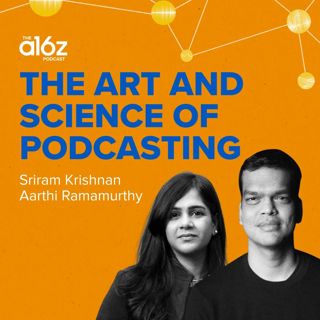
The Art and Science of Podcasting
It’s both easier and harder than ever to build a successful podcast. In this episode, we chat with Sriram and Aarthi from the Good Time Show, who ventured into the world of audio peak pandemic and have since interviewed the likes of Elon Musk, Calvin Harris, and Naomi Osaka.We get their perspective on how to succeed in this competitive landscape, differentiation and the sliding scale of entertainment and information, the difference between an audience and a community, podcast analytics and how they’re changing, and even what Sriram has learned from his frontrow experience at Twitter recently.Topics Covered:00:00 - Intro02:20 - Podcast trivia06:07 - Starting a podcast08:45 - Differentiating13:10 - Information vs entertainment18:08 - Getting off the talk track20:40 - Growth and metrics22:31 - Authenticity27:10 - Secret sauce of podcasting28:10 - Advice for new podcasters29:58 - In-person events32:06 - Tech as a force for good34:50 - The next wave of social37:23 - Creator middle class41:16 - Podcast infrastructure42:55 - ChatGPT45:10 - Swapping lives with a celebrity52:26 - Your personal monopoly Resources:Find Sriram on Twitter: https://twitter.com/sriramkFind Aarthi on Twitter: https://twitter.com/aarthirFind Aarthi and Sriram on Youtube: https://www.youtube.com/@AarthiAndSriramCheck out the Good Time Show: https://www.aarthiandsriram.com/ Stay Updated: Find us on Twitter: https://twitter.com/a16zFind us on LinkedIn: https://www.linkedin.com/company/a16zSubscribe on your favorite podcast app: https://a16z.simplecast.com/Follow our host: https://twitter.com/stephsmithioPlease note that the content here is for informational purposes only; should NOT be taken as legal, business, tax, or investment advice or be used to evaluate any investment or security; and is not directed at any investors or potential investors in any a16z fund. For more details please see a16z.com/disclosures. Stay Updated:Find a16z on XFind a16z on LinkedInListen to the a16z Podcast on SpotifyListen to the a16z Podcast on Apple PodcastsFollow our host: https://twitter.com/eriktorenberg Please note that the content here is for informational purposes only; should NOT be taken as legal, business, tax, or investment advice or be used to evaluate any investment or security; and is not directed at any investors or potential investors in any a16z fund. a16z and its affiliates may maintain investments in the companies discussed. For more details please see a16z.com/disclosures. Hosted by Simplecast, an AdsWizz company. See pcm.adswizz.com for information about our collection and use of personal data for advertising.
20 Mars 202351min
